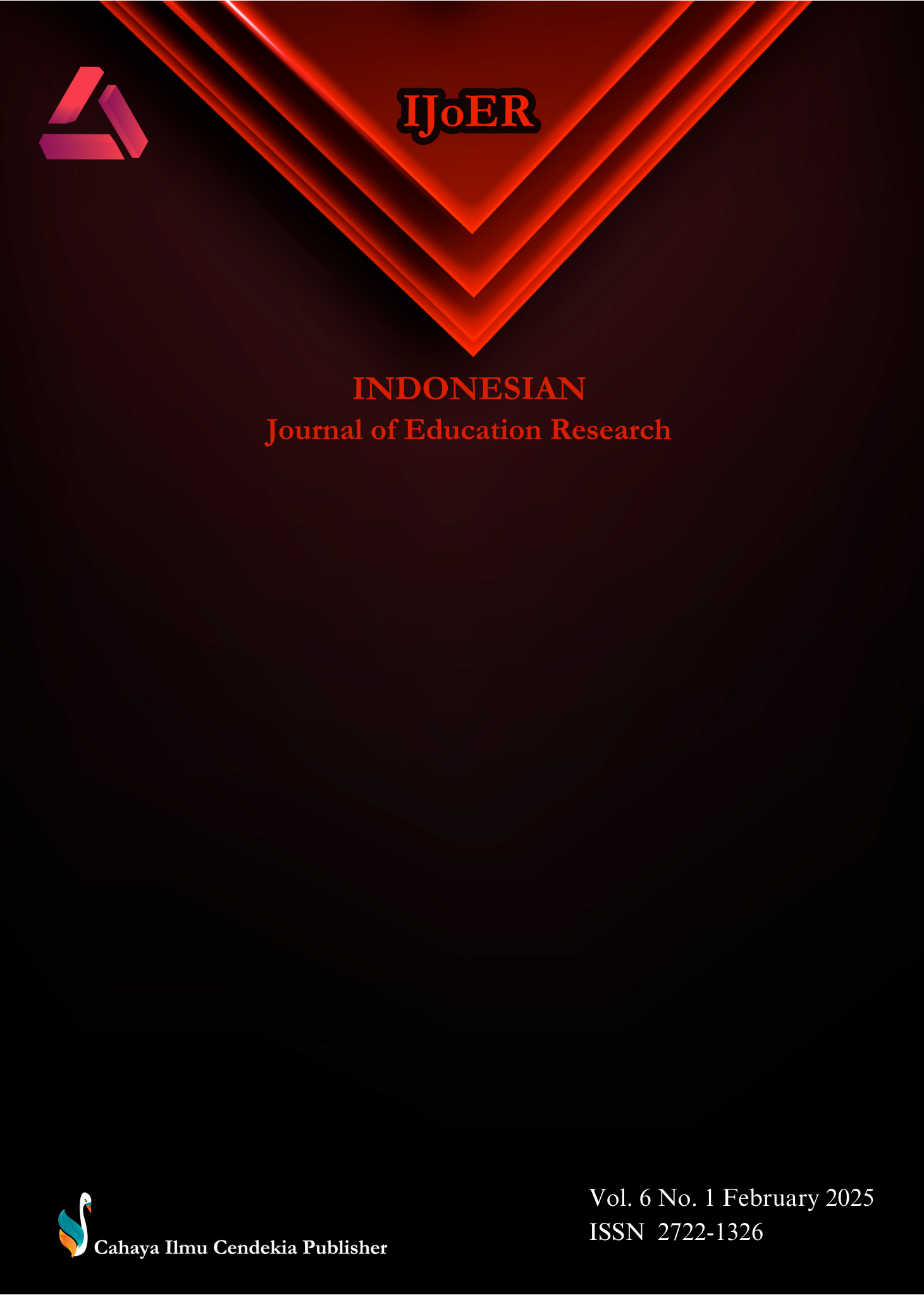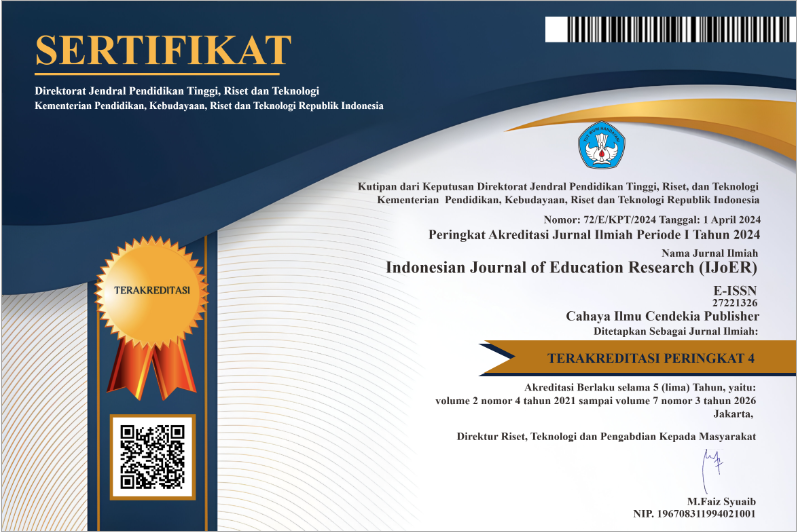From Home to Campus: Unveiling Parents' Perspectives on the Resumption of In-Person Classes in Higher Education
Abstract
Purpose of the Study: This study explores the challenges faced by parents during the full implementation of in-person classes at the tertiary level and examines their suggestions for improving this transition.
Methodology: The study employed a qualitative descriptive research design. In-depth interviews were conducted with ten parents using a guided questionnaire to gather comprehensive insights. Triangulation was used to ensure the reliability and accuracy of the findings.
Main Findings: The study highlights the resourcefulness and determination of parents in supporting their children's college education. It uncovers not only tangible successes—such as academic achievements and career prospects—but also narratives of resilience, creativity, and unwavering commitment in overcoming financial, emotional, and unforeseen challenges.
Novelty/Originality of this Study: The study presents untold stories of parents' experiences, offering unique perspectives on their struggles and triumphs. These insights can inspire educational practices and policies that better address the needs of families supporting tertiary education in a post-pandemic context.
References
A. Qayyum, A. Saeed, and A. H. Qureshi, “The missing spark: Enhancing parental engagement in Punjab’s early childhood education programs,” Pakistan Languages and Humanities Review, vol. 8, no. 2, pp. 174–188, 2024.
Z. Abbas, Z. Shakoor, and K. Fatima, “Role of Parental Involvement on Elementary Students Academic Success and Well Being,” Journal of Asian Development Studies, vol. 12, no. 4, pp. 763–770, 2023.
M. Mikolajczak and I. Roskam, “Parental burnout: Moving the focus from children to parents,” New Dir Child Adolesc Dev, vol. 2020, no. 174, pp. 7–13, 2020.
M. C. Lambert, K. Duppong Hurley, S.-A. January, and J. Huscroft D’Angelo, “The role of parental involvement in narrowing the academic achievement gap for high school students with elevated emotional and behavioral risks,” J Emot Behav Disord, vol. 30, no. 1, pp. 54–66, 2022.
I. M. Alarifi, Learning Limitless Knowledge: Transformative Learning Pathway to Unlocking and Harnessing the Endless Power of Knowledge. Balboa Press, 2023.
K. E. Kovács, B. Dan, A. Hrabéczy, K. Bacskai, and G. Pusztai, “Is resilience a trait or a result of parental involvement? The results of a systematic literature review,” Educ Sci (Basel), vol. 12, no. 6, p. 372, 2022.
A. , J. I. , X. J. , V. V. , S. R. , E. G. , … & P. M. Bozkurt, “A global outlook to the interruption of education due to COVID-19 Pandemic: Navigating in a time of uncertainty and crisis,” Asian Journal of Distance Education, vol. 15, no. 1, 2020.
B. Nowrouzi-Kia et al., “Remote work transition amidst COVID-19: Impacts on presenteeism, absenteeism, and worker well-being—A scoping review,” PLoS One, vol. 19, no. 7, p. e0307087, 2024.
R. L. Tagare and R. L. Tagare, “Gen Z’s fitness concepts and ways to be fit: Insights to strengthen students’ learning experiences in tertiary physical education,” Journal for Educators, Teachers and Trainers, vol. 13, no. 5, pp. 66–77, 2022, doi: 10.47750/jett.2022.13.05.007.
R. Tagare Jr, “Back to in-person classes in the Philippine basic education: threading the opportunities and limitations in the teaching of Physical Education,” Retos: nuevas tendencias en educación física, deporte y recreación, no. 47, pp. 986–993, 2023.
J. Smith, J. Fisher, and V. Ramprogus, “Adding University to work and life: the work–life balance and well-being experiences of women who combine employment, HE learning and care of the family,” Community Work Fam, vol. 25, no. 5, pp. 583–602, 2022, doi: 10.1080/13668803.2020.1779662.
K. L. Pattison, A. M. Hoke, E. W. Schaefer, J. Alter, and D. L. Sekhar, “National survey of school employees: COVID‐19, school reopening, and student wellness,” Journal of School Health, vol. 91, no. 5, pp. 376–383, 2021.
J. G. S. Kahambing, “Time to reopen schools: COVID-19, health disparity and education,” J Public Health (Bangkok), vol. 43, no. 3, pp. e568–e569, 2021.
J. W. Creswell and C. N. Poth, Qualitative inquiry and research design: Choosing among five approaches. Sage publications, 2016.
K. Kostyrka-Allchorne et al., “Supporting Parents & Kids Through Lockdown Experiences (SPARKLE): A digital parenting support app implemented in an ongoing general population cohort study during the COVID-19 pandemic: A structured summary of a study protocol for a randomised controlled trial,” Trials, vol. 22, pp. 1–3, 2021.
H. Taherdoost, “Validity and reliability of the research instrument; how to test the validation of a questionnaire/survey in a research,” International Journal of Academic Research in Management (IJARM), vol. 5, 2016.
R. Senior, “Connectivity: A framework for understanding effective language teaching in face-to-face and online learning communities,” RELC journal, vol. 41, no. 2, pp. 137–147, 2010.
K. Ratih, M. F. J. Syah, S. Jarin, and J. Buckworth, “Learning patterns during the disruptive situation in informal education: Parents’ efforts and challenges in the adjustment of progressive learning,” Indonesian Journal on Learning and Advanced Education, vol. 3, no. 3, pp. 180–193, 2022.
A. I. Drever, E. Odders‐White, C. W. Kalish, N. M. Else‐Quest, E. M. Hoagland, and E. N. Nelms, “Foundations of financial well‐being: Insights into the role of executive function, financial socialization, and experience‐based learning in childhood and youth,” Journal of Consumer Affairs, vol. 49, no. 1, pp. 13–38, 2015.
K. ; T. K. ; S. K. Chiasson, “Faculty perceptions of moving a face-to-face course to online instruction,” J. Coll. Teach. Learn, vol. 12, pp. 231–240, 2015.
D. Widyawan, A. Ma’mun, B. Rahely, and Y. Hendrayana, “Parents of students with disabilities views in learning physical education in special needs school,” Qualitative Report, vol. 25, no. 4, pp. 924–936, 2020.
K. Pascua, R. Lagunero Tagare, and R. L. Tagare, “Experiences, Motivation, Commitment, and Suggestions of Physical Education Teachers Amidst COVID-19 Crisis,” Egitim ve Bilim, vol. 49, no. 219, pp. 187–200, 2024, doi: 10.15390/EB.2024.12095.
T. H. Le and C. Arcodia, “Generation Z: Young People’s Perceptions of Cruising Safety, Security and Related Risks,” in Generation Z Marketing and Management in Tourism and Hospitality, Springer, 2021, pp. 193–221.
K. R. Gill, “Developing a Syllabus Policy on Safety and Comfort,” Double Helix, vol. 10, 2022.
C. Wiskin, J. Dowell, and C. Hale, “Beyond ‘health and safety’–the challenges facing students asked to work outside of their comfort, qualification level or expertise on medical elective placement,” BMC Med Ethics, vol. 19, pp. 1–10, 2018.
V. M. Cvetković, N. Nikolić, and T. Lukić, “Exploring Students’ and Teachers’ Insights on School-Based Disaster Risk Reduction and Safety: A Case Study of Western Morava Basin, Serbia,” Safety, vol. 10, no. 2, p. 50, 2024.
K. S. Kearney, Z. Naifeh, T. Hammer, and A. Cain, “‘ family’ ties for Foster alumni in college: an open systems consideration,” Rev High Ed, vol. 42, no. 2, pp. 793–824, 2019.
A. M. Mínguez, “Children’s relationships and happiness: The role of family, friends and the school in four European countries,” J Happiness Stud, vol. 21, no. 5, pp. 1859–1878, 2020.
C. Booth, Keeping families together: The Homebuilders model. Routledge, 2017.
P. Dolan, N. Žegarac, and J. Arsić, “Family Support as a right of the child,” Soc Work Soc Sci Rev, vol. 21, no. 2, pp. 8–26, 2020.
L. M. Jalos Jr, “Parental Involvement to The Full Implementation of In-Person Classes in The Division of Quezon: Basis for A Parental Support Program (PSP),” Rivista Italiana di Filosofia Analitica Junior, vol. 14, no. 1, pp. 1074–1084, 2023.
R. Watts and J. Pattnaik, “Perspectives of parents and teachers on the impact of the COVID-19 pandemic on children’s socio-emotional well-being,” Early Child Educ J, vol. 51, no. 8, pp. 1541–1552, 2023.
K. R. Ronan, K. Crellin, D. M. Johnston, K. Finnis, D. Paton, and J. Becker, “Promoting child and family resilience to disasters: Effects, interventions, and prevention effectiveness,” Child Youth Environ, vol. 18, no. 1, pp. 332–353, 2008.
M. L. Reyes and K. F. Resurreccion, “The self in family coexistence: developing youth’s agency and prosociality,” Contemp Soc Sci, vol. 10, no. 1, pp. 52–69, 2015.
J. E. Kirui Kipng’Etich, A. C. Langat, and C. W. Rop, “Assessment of essential physical education equipment and facilities in teacher training colleges in Kenya,” Education (Chula Vista), vol. 4, no. 3, p. 73, 2014.
A. J. B. Nioda and R. L. Tagare, “The Experiences of Non-Physical Education Generalist Teachers in Implementing PE in the Primary Grades: Implications for Capability Development Initiatives,” International Electronic Journal of Elementary Education, vol. 16, no. 3, pp. 325–335, 2024, doi: 10.26822/iejee.2024.334.
R. L. Tagare, “Back to in-person classes in the Philippine basic education: threading the opportunities and limitations in the teaching of Physical Education,” Retos, vol. 47, pp. 986–993, 2023, doi: 10.47197/RETOS.V47.95921.
S. Leisterer and D. Jekauc, “Students’ emotional experience in physical education—a qualitative study for new theoretical insights,” Sports, vol. 7, no. 1, p. 10, 2019, doi: 10.3390/sports7010010.
S. Baena-Morales, D. Jerez-Mayorga, P. Delgado-Floody, and J. Martínez-Martínez, “Sustainable development goals and physical education. A proposal for practice-based models,” Int J Environ Res Public Health, vol. 18, no. 4, p. 2129, 2021.
M. N. Karimi and F. Ziaabadi, “Teachers’ motivation to teach, teacher credibility, metacognitive awareness, and students’ motivation and affective learning: A structural equation modeling analysis,” Teaching English Language, vol. 13, no. 1, pp. 147–176, 2019.
J. Padmanabhan, A. Borthakur, and K. Mittal, “Environmental awareness among teachers and students of higher education,” Educational Quest, vol. 8, no. 3, pp. 721–726, 2017.
R. P. Camariñas, R. L. Tagare, and R. L. Tagare, “Private tertiary students’ unspoken thoughts in learning physical education amidst COVID-19 pandemic: Implications for intervention,” Edu Sportivo: Indonesian Journal of Physical Education, vol. 3, no. 1, pp. 41–55, 2022, doi: 10.25299/es:ijope.2022.vol3(1).8444.
K. Pascua and R. L. Tagare Jr, “Experiences, Motivation, Commitment, and Suggestions of Physical Education Teachers Amidst COVID-19 Crisis,” Egitim ve Bilim, vol. 49, no. 219, pp. 187–200, 2024, doi: 10.15390/EB.2024.12095.
Copyright (c) 2025 Normena M. Comampong, Ruben L. Tagare Jr., Marichu A. Calixtro, Marlene E. Orfrecio, Joanna Caryl P. Esponja, Bae Kellah Kassandra Landawe, Cheeze R. Janito, Norge D. Martinez

This work is licensed under a Creative Commons Attribution 4.0 International License.
Authors who publish with this journal agree to the following terms:
- Authors retain copyright and acknowledge that the Indonesian Journal of Education Research (IJoER) is the first publisher licensed under a Creative Commons Attribution 4.0 International License.
- Authors are able to enter into separate, additional contractual arrangements for the non-exclusive distribution of the journal's published version of the work (e.g., post it to an institutional repository or publish it in a book), with an acknowledgment of its initial publication in this journal.
- Authors are permitted and encouraged to post their work online (e.g., in institutional repositories or on their website) prior to and during the submission process, as it can lead to productive exchanges and earlier and greater citation of published work.







.png)
.png)




















